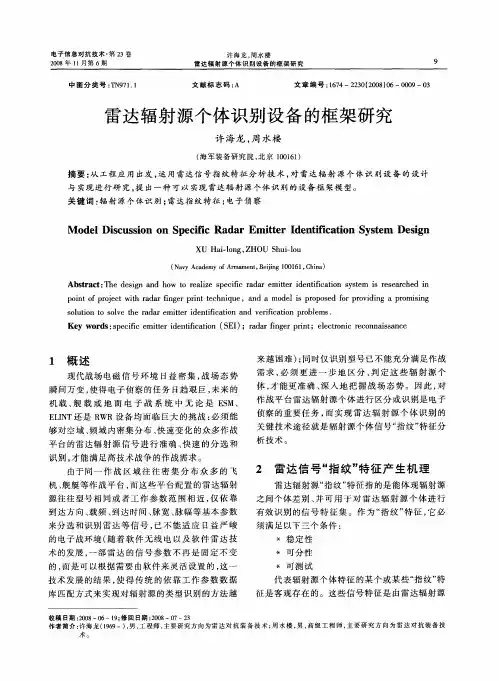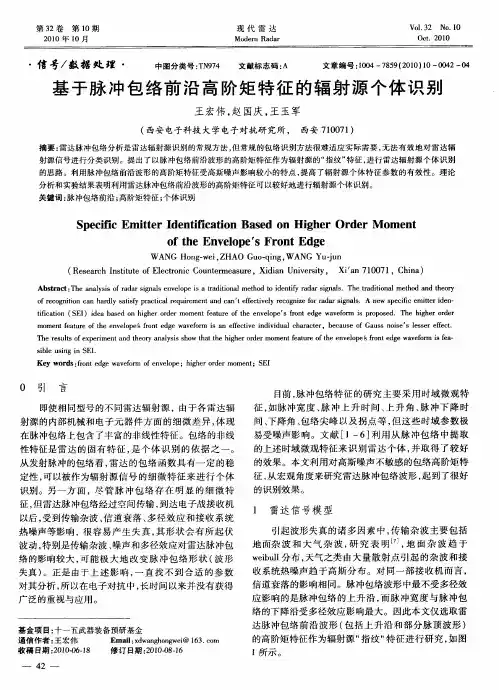通信辐射源个体识别研究现状及发展趋势
- 格式:pdf
- 大小:494.05 KB
- 文档页数:7
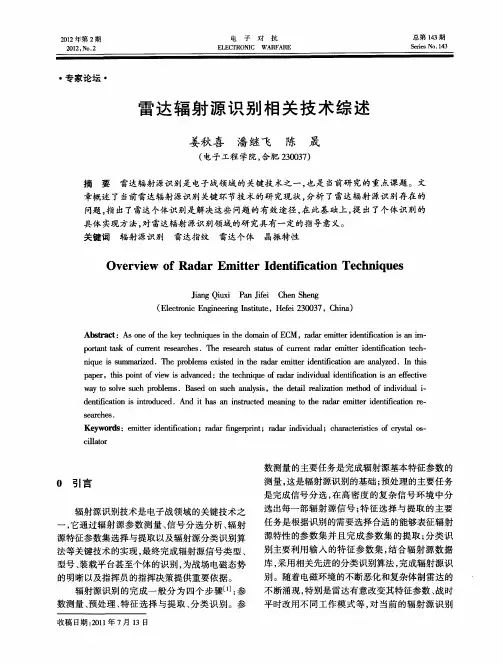
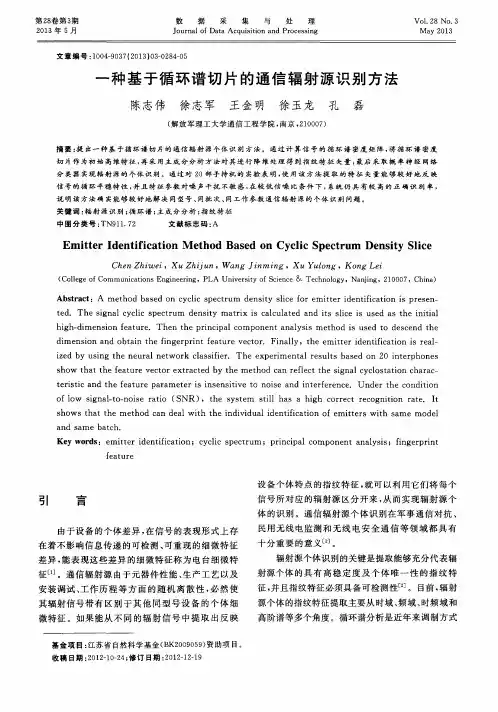
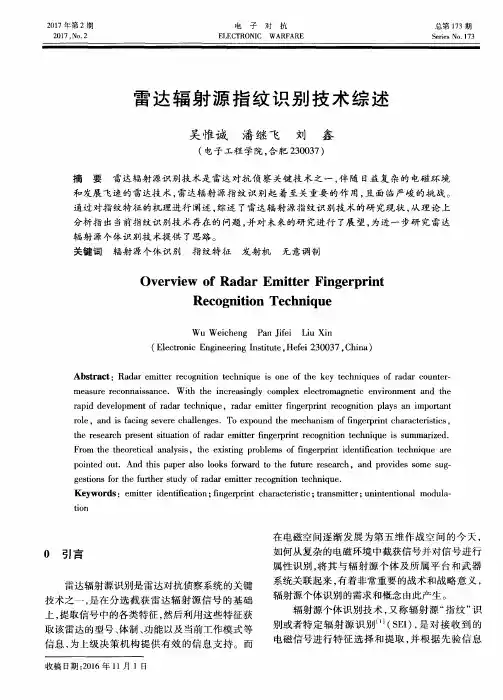
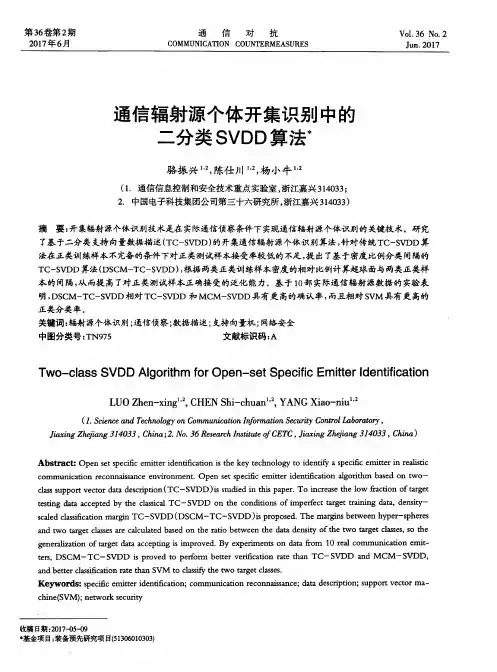
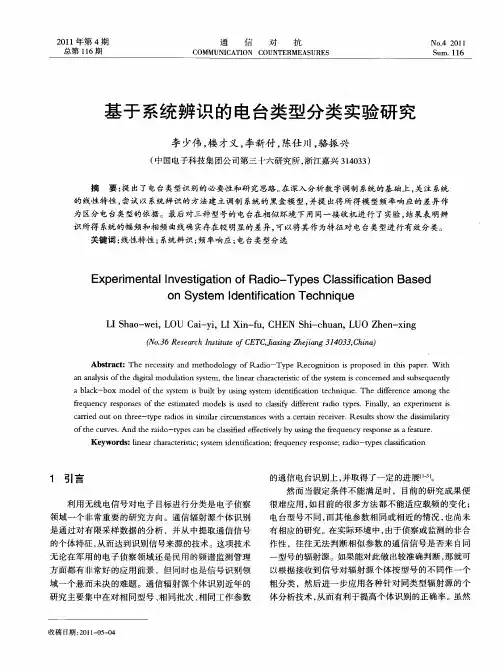
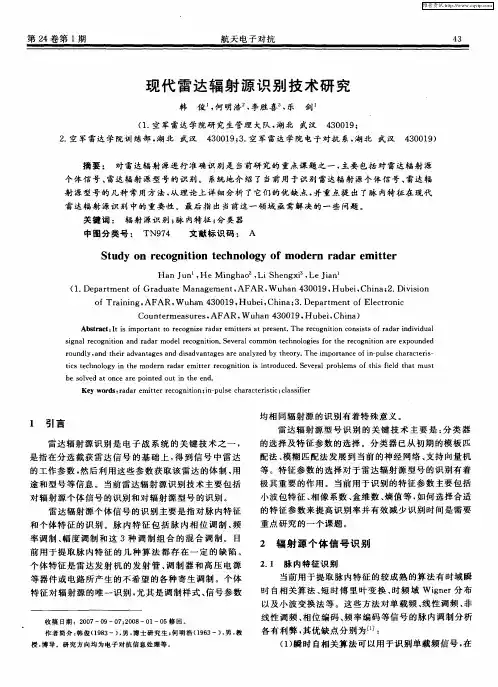
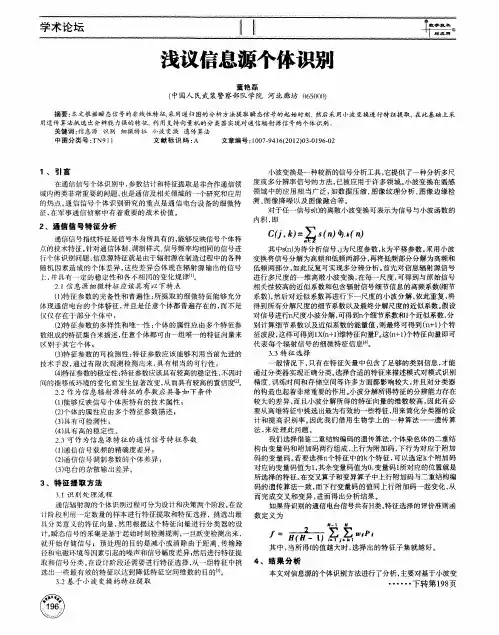
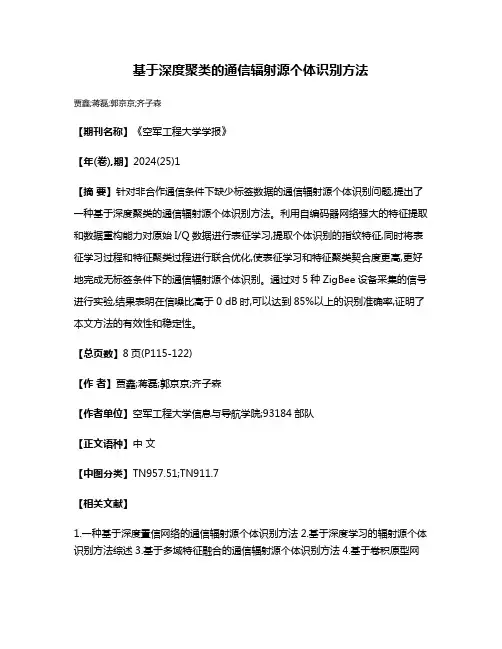
基于深度聚类的通信辐射源个体识别方法
贾鑫;蒋磊;郭京京;齐子森
【期刊名称】《空军工程大学学报》
【年(卷),期】2024(25)1
【摘要】针对非合作通信条件下缺少标签数据的通信辐射源个体识别问题,提出了一种基于深度聚类的通信辐射源个体识别方法。
利用自编码器网络强大的特征提取和数据重构能力对原始I/Q数据进行表征学习,提取个体识别的指纹特征,同时将表征学习过程和特征聚类过程进行联合优化,使表征学习和特征聚类契合度更高,更好地完成无标签条件下的通信辐射源个体识别。
通过对5种ZigBee设备采集的信号进行实验,结果表明在信噪比高于0 dB时,可以达到85%以上的识别准确率,证明了本文方法的有效性和稳定性。
【总页数】8页(P115-122)
【作者】贾鑫;蒋磊;郭京京;齐子森
【作者单位】空军工程大学信息与导航学院;93184部队
【正文语种】中文
【中图分类】TN957.51;TN911.7
【相关文献】
1.一种基于深度置信网络的通信辐射源个体识别方法
2.基于深度学习的辐射源个体识别方法综述
3.基于多域特征融合的通信辐射源个体识别方法
4.基于卷积原型网
络的通信辐射源个体开集识别方法5.基于SDAE_SVDD的通信辐射源个体开集识别方法
因版权原因,仅展示原文概要,查看原文内容请购买。
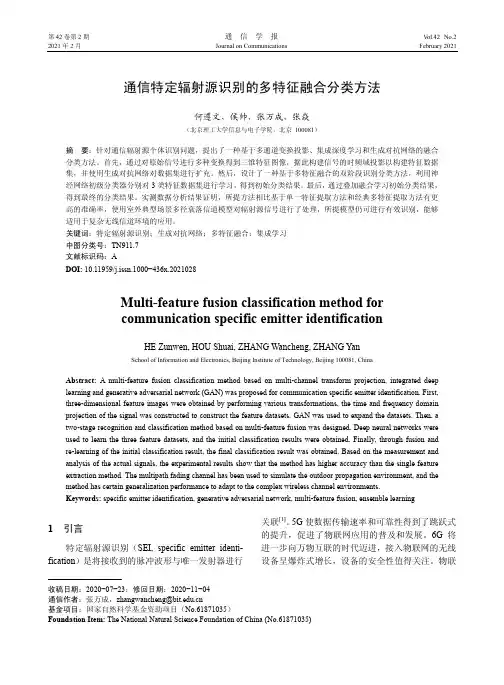
2021年2月Journal on Communications February 2021 第42卷第2期通信学报V ol.42No.2通信特定辐射源识别的多特征融合分类方法何遵文,侯帅,张万成,张焱(北京理工大学信息与电子学院,北京 100081)摘 要:针对通信辐射源个体识别问题,提出了一种基于多通道变换投影、集成深度学习和生成对抗网络的融合分类方法。
首先,通过对原始信号进行多种变换得到三维特征图像,据此构建信号的时频域投影以构建特征数据集,并使用生成对抗网络对数据集进行扩充。
然后,设计了一种基于多特征融合的双阶段识别分类方法,利用神经网络初级分类器分别对3类特征数据集进行学习,得到初始分类结果。
最后,通过叠加融合学习初始分类结果,得到最终的分类结果。
实测数据分析结果证明,所提方法相比基于单一特征提取方法和经典多特征提取方法有更高的准确率,使用室外典型场景多径衰落信道模型对辐射源信号进行了处理,所提模型仍可进行有效识别,能够适用于复杂无线信道环境的应用。
关键词:特定辐射源识别;生成对抗网络;多特征融合;集成学习中图分类号:TN911.7文献标识码:ADOI: 10.11959/j.issn.1000−436x.2021028Multi-feature fusion classification method forcommunication specific emitter identificationHE Zunwen, HOU Shuai, ZHANG Wancheng, ZHANG YanSchool of Information and Electronics, Beijing Institute of Technology, Beijing 100081, China Abstract: A multi-feature fusion classification method based on multi-channel transform projection, integrated deep learning and generative adversarial network (GAN) was proposed for communication specific emitter identification. First, three-dimensional feature images were obtained by performing various transformations, the time and frequency domain projection of the signal was constructed to construct the feature datasets. GAN was used to expand the datasets. Then, a two-stage recognition and classification method based on multi-feature fusion was designed. Deep neural networks were used to learn the three feature datasets, and the initial classification results were obtained. Finally, through fusion and re-learning of the initial classification result, the final classification result was obtained. Based on the measurement and analysis of the actual signals, the experimental results show that the method has higher accuracy than the single feature extraction method. The multipath fading channel has been used to simulate the outdoor propagation environment, and the method has certain generalization performance to adapt to the complex wireless channel environments.Keywords: specific emitter identification, generative adversarial network, multi-feature fusion, ensemble learning1 引言特定辐射源识别(SEI, specific emitter identi-fication)是将接收到的脉冲波形与唯一发射器进行关联[1]。
